Road bike geometry compared to 80s and 90s
samsbike
Posts: 942
I have been looking at road bikes over the years and have a hankering for an old steel frame.
However, I keep reading - the bike has geometry for that period?
I realise they have sloping top tubes now and larger headtubes but how else is modern geometry different to say a classic 90s racer?
thanks
However, I keep reading - the bike has geometry for that period?
I realise they have sloping top tubes now and larger headtubes but how else is modern geometry different to say a classic 90s racer?
thanks
0
Comments
-
As an owner of a classic 1980s bike, geometry hasn't actually changed much i.e. the position of the contact points relative to the rider as 'bike fit' depends on human anatomy, which hasn't changed much in the last 20 years. What you do get with modern bikes is far greater possibilities in terms of set-up due to the huge variety in terms of things like stems, handlebar shapes etc. The biggest difference in bike set-up is due to integrated brake / gear levers. Old school was to ride on the drops whereas these days people ride on the hoods - only using the drops periodically. Whilst older bikes look like the bars are higher, the relative position between the hands and the saddle remains much the same. Likewise, modern compact frames are usually run with lots of exposed seatpost. If you look at frames from the 80s and 90s, the actual frame angles and dimensions are much the same on modern frames.Make mine an Italian, with Campagnolo on the side..0
-
A few years ago when I got back into cycling I could hardly reach the bars on my old Peugeot carbon race bike, way too short a head tube for my ageing body
 I don't think 'race bike' geometry has changed much, just there's a another option these days with 'sportive' geometry so you can avoid a mass of spacers or 6" of quill stem showing. 0
I don't think 'race bike' geometry has changed much, just there's a another option these days with 'sportive' geometry so you can avoid a mass of spacers or 6" of quill stem showing. 0 -
Here is a good look at the frames on my 3 bikes, if you want to compare.
1st is a 1980 Raleigh Record sprint, 2nd is a Peugeot c300 from 2002 and last is my Bianchi from 2012.
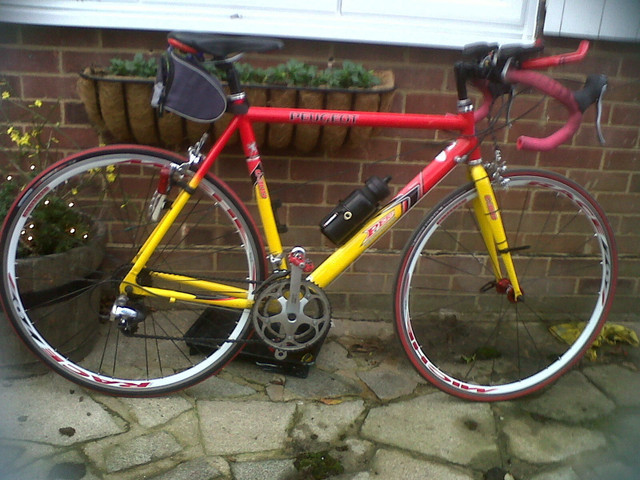
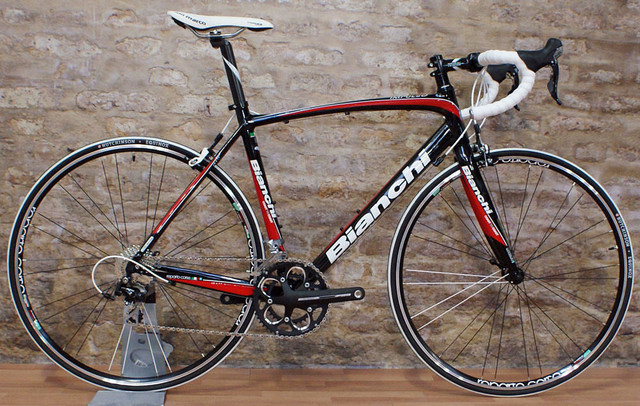
Hope this helps
si"Oh, Edmund! Can it be true? That I hold here, in my mortal hands, a nugget of purest green!"
Road = 1980 Raleigh Record Sprint
MTB = 2000 Scott Vail
Road = 2002 Peugeot c300 comp road race bike
Road = 2012 Bianchi Impulso
Car = Saab 93, MGTF0 -
Thanks0
-
sexysi wrote:Here is a good look at the frames on my 3 bikes, if you want to compare.
1st is a 1980 Raleigh Record sprint, 2nd is a Peugeot c300 from 2002 and last is my Bianchi from 2012.


Your position on all three are slightly different, saddle to bar drop increases as the bikes get newer!0 -
I guess this change in position is in line with the comment above about the move from riding mainly on the drops to riding mainly on the hoods...
Andy0 -
Does that mean the the headtubes are lower on the modern bikes to compensate?0
-
That raleigh Sprint frame must be massive. Look at the length of the headtube!!0
-
I'm not sure those photos support the discussion - the first frame is too big judging purely by the lack of exposed seatpost and short stem.
Headtubes on modern frames tend to be longer because there isn't the need to accommodate the height of a quill stem and also headset bearings integrated into the top tube. There is also a trend for longer headtubes on less race-oriented bikes rather than having a short headtube with a stack of spacers - but some really look like they've taken a battering with the ugly-stick IMO.Make mine an Italian, with Campagnolo on the side..0 -
I swap from a 2010 Scott CR1 to a 1992 Ribble 653 and the position doesn't feel much different - a bit more stretched out on the Ribble but that is due to the stem being 1cm longer on that bike. When you look at the frames you would think the would be much different especially as the Ribble has old school raked forks. Maybe I'm not very sensitive to changes in geometry though?0
-
The bike is a Columbia 753 Cyclo-Cross bike and can be made into a complete RETRO bike again, it's pre 1981 and was made for a very good cross rider of the time, it was resprayed at Bob Jacksons some years ago.
I stoped using it as a work bike last year due to a rust hole under the r/h chain stay.
It can have a choice of wheels, but on it are Campag Record on GP4s
Following the closure of Carlton Cycles in 1981 a small group of ex-Carlton workers got together and made Columbia Cycles at Worksop for a while. 0
0 -
Geometry has not changed much. More we are using smaller frames. My 1960 Woodrup was a 23" (58.5cm) C to T frame with a 23" TT and 73deg angles. We used to refer to them as 'square' frames. I now ride a 56cm C to T with 73.5deg angles and a 55.5cm TT. They also look a lot different because of the smaller tube diameters.0
-
I'll add some of mine to the mix! I go with previous comments that the geometry is much the same but handlebars were typically closer to saddle height than now.
Dawes Horizon - probably slightly too big for me. Certainly I need a shorter stem but the bars are as low as they can be.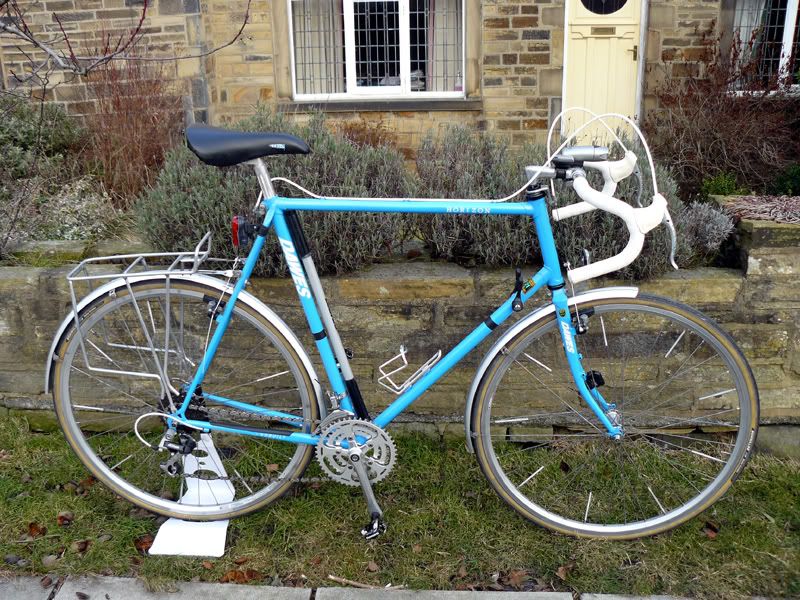
Raleigh Record Ace - I've since lowered the bars a little. A half inch or more smaller than the Dawes.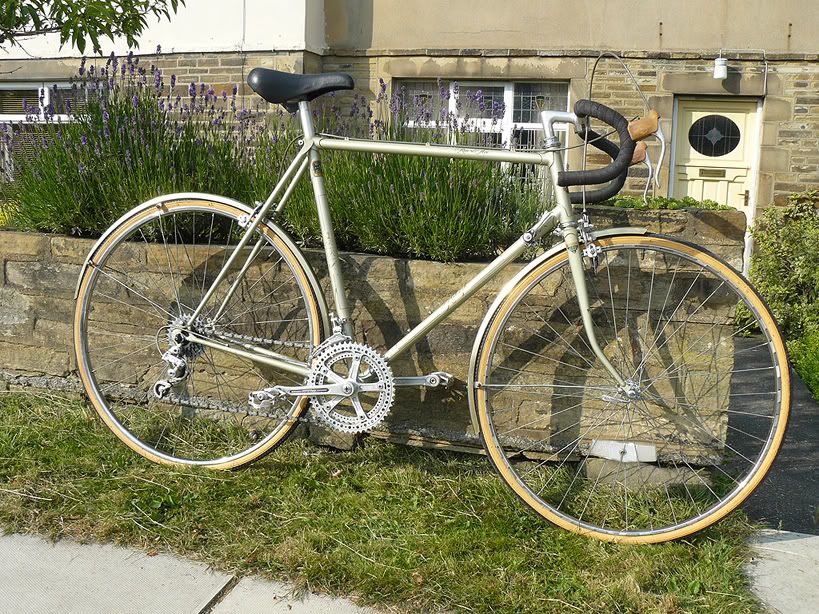
Look 585 - professional fitting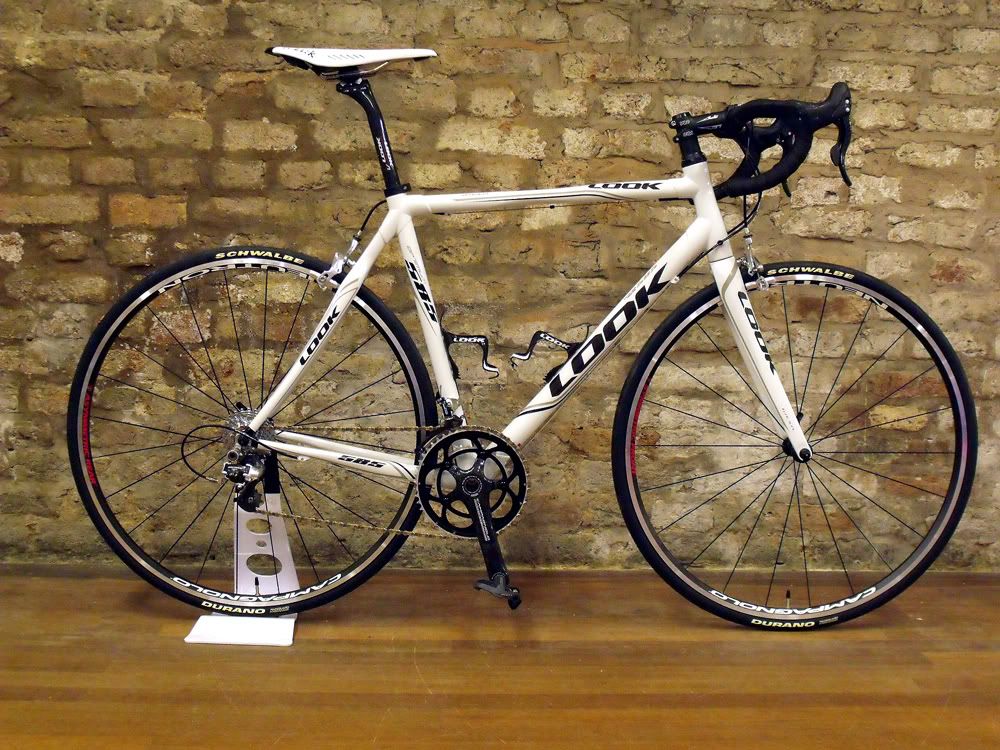 Faster than a tent.......0
Faster than a tent.......0



